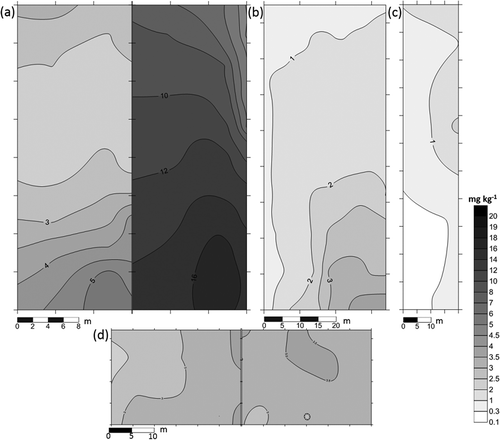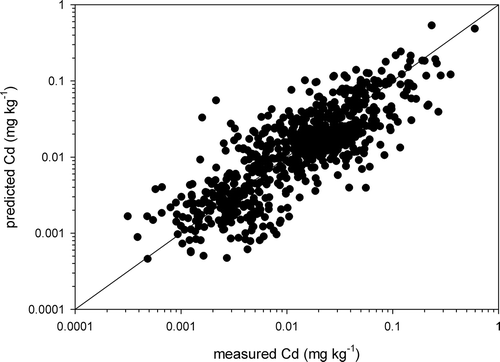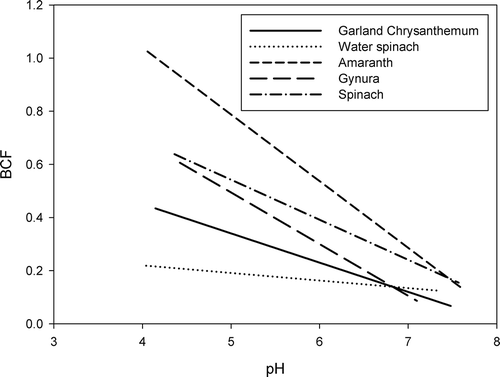Figures & data
Table 1 Selected soil properties and soil cadmium (Cd) concentrations at experimental sites
Figure 1 Map of Taiwan and locations of municipalities where vegetable fields are located. (BD: Bade District, Taoyuan County; DJ: Dajia District, Taichung City; HL: Houli District, Taichung City; HW: Huwei Township, Yunlin County).

Figure 2 Distribution of cadmium (Cd) concentrations at experimental sites. (a) Bade site; (b) Dajia site; (c) Huwei site; (d) Houli site. Both the Bade and Houli sites were composed of two adjacent fields.

Table 2 Overview of pH, cation exchange capacity (CEC), total cadmium (Cd) and available metal concentrations in soil along with Cd concentrations, bioconcentration factor (BCF), and BCF rank of vegetables†
Table 3 Derived soil–plant transfer models of cadmium (Cd) concentrations in vegetables used in field experiments†
Figure 3 Measured versus predicted cadmium (Cd) concentrations in vegetables. The solid line is a 1:1 line of measured and predicted concentrations.

Table 4 Cadmium (Cd) concentrations in vegetables (maximum, minimum, mean and standard deviation values) collected from major production areas, and percentages of vegetables exceeding the regulatory concentration of Cd in Taiwan
Table 5 The percentage distribution of vegetables with cadmium (Cd) concentrations in edible parts exceeding the regulatory concentrations of Cd for plants grown in different soil Cd
Figure 4 Relationships between the bioconcentration factor (BCF) of cadmium (Cd) and soil pH for garland chrysanthemum (Chrysanthemum coronarium L.), water spinach (Ipomoea aquatica Forsk.), amaranth (Amaranthus tricolor L.), gynura (Gynura bicolor DC.), and spinach (Spinacia oleraceae L.; only the trend lines derived using linear regression are shown).

